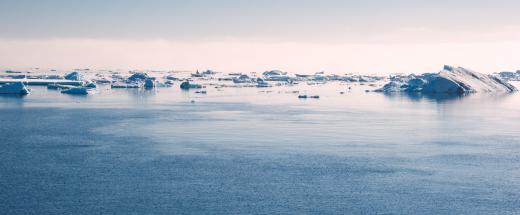What is the Paleogene Period?
 Michael Anissimov
Michael Anissimov
The Paleogene period is the first of two periods is the Cenozoic, which extends from the extinction of the dinosaurs (except birds) 65.5 million years ago to the present day. The Paleogene itself extends from 65.5 million years ago to 23 million years ago. The Paleogene period is considered the beginning of the Age of Mammals, in contrast to the Age of Reptiles which came before it. It is composed of three parts, each about 13 million years in length: the Paleocene, Eocene, and Oligocene.
During the Paleogene period, the Earth's continents gradually moved from their old configuration, consolidated near each other, to their present configuration, more spaced out. By 50 million years ago, the Earth was approaching what we would consider normal, although India was an island and much of central Asia was flooded. The Earth's average temperature started off as typical, then quickly began to decrease, a trend that has continued until relatively recently.

In the Paleogene period, dense forests expanded to more extreme latitudes than during the Jurassic. Sea levels decreased, exposing significant amounts of land which had previously been submerged. Africa and South America were both island continents during this period, developing their own unique flora and fauna.
Birds, ancestors of surviving dinosaurs, evolved into something almost like their present form during the Paleogene. Without the dinosaurs to rule the land, mammals thrived, some growing to large proportions. The ancestors of rhinos, horses, cats, primates, and dogs evolved during the Paleogene period. The most prominent mammals during the early Paleogene period are from groups that are now extinct, but near its end, many of the direct evolutionary ancestors of modern forms had evolved. Many of the small mammals resembled possums or raccoons in appearance. The ecological niche previously occupied by dinosaurs now being vacant, mammals experienced adaptive radiation into a variety of new forms.

Although mammals were not very large yet, large flightless birds existed, dominating the land in certain areas. Some of these were as tall as 2 m and were ferocious predators. In the sea, aquatic mammals such as the whales evolved, some growing to as much as 25 m in length. Few fossils of life in Australia or Antarctica have been uncovered from this period.
AS FEATURED ON:
AS FEATURED ON:












Discuss this Article
Post your comments